Sulfate Radical-Based Oxidation Processes for Emerging Contaminants: Advances and Perspectives on Degradation of Hormones
Abstract
1. Introduction
2. Background of Steroid Hormones
2.1. Sources and Occurrence of Hormones in Water
2.2. Removal of Hormones from Wastewater
3. Bibliometric Survey on Scientific Literature Regarding Steroidal Hormone Removal in Wastewater
4. Advanced Oxidation Processes (AOPs)
4.1. Main AOP Applied to the Removal of E2 and EE2: Observations and Trends
4.1.1. Photolysis-Based Processes
4.1.2. Photocatalysis-Based Processes
- -
- Photocatalytic efficiency: To evaluate the most suitable catalyst for degrading ECs. The degradation performance of the catalyst under specific conditions, like UV wavelength, intensity and water flux, must be quantified. For example, increasing the Ti surface content from 4% to 6.5% improved the E2 removal from 46% to 81% [25].
- -
- Stability and binding to support: The catalyst must remain stable during operation. PVDF membranes modified via e-beam-induced graft polymerization improved the TiO2 adhesion and minimize leaching [25].
- -
4.1.3. Ozonation-Based Processes
4.1.4. Sonolysis-Based Processes
4.1.5. Fenton-Based Processes
4.2. Key Factors Influencing the Efficiency of AOPs for Hormone Removal
4.3. Comparison of the Main AOPs Applied to the Removal of E2 and EE2: Advantages and Limitations of the Processes
5. Sulfate Radical-Based Processes for Hormone Removal
5.1. Use of Peroxydisulfate (PDS) and Peroxymonosulfate (PMS) in AOPs for Hormone Removal
5.2. Activation Methods of PMS and PDS
5.3. Direct Activation by Ultraviolet Irradiation
- (i)
- Photolysis, in which molecules are broken down by direct light absorption (Equation (1));
- (ii)
- The formation of active oxidizing radicals resulting from the cleavage of the peroxide bond (–O–O) in PDS and PMS (Equations (2) and (3), respectively) (Figure 10). Sulfate radicals can react with water or hydroxide ions, generating hydroxyl radicals (Equations (4) and (5), respectively). Finally, both SO4•− and •OH radicals promote the degradation of pollutants (Equation (6)), leading to smaller transformation products or complete mineralization into CO2 and water [78,104].
6. Degradation of E2 and EE2 by Sulfate Radical-Based Processes
6.1. Main Operational Factors Influencing Hormone Removal from Wastewater by Advanced Oxidation Processes with Sulfate Radical Generation
6.1.1. pH
6.1.2. Temperature
6.1.3. Ions Concentration
6.1.4. Organic Matter Concentration
6.1.5. Oxidant-to-Hormone Ratio
6.1.6. UV Radiation Dose
7. Integrated Analysis of the Efficiency of Oxidative Processes with Sulfate Radical Formation for the Removal of E2 and EE2
7.1. Identification of Degradation Products
7.2. Assessment of Estrogenic Activity
7.3. Assessment of By-Product Toxicity
8. Summary of Key Findings
- The steroid hormones 17β-estradiol (E2) and 17α-ethinylestradiol (EE2) are emerging contaminants with high estrogenic potential and are frequently detected in aquatic environments, even after conventional wastewater treatment.
- Advanced oxidation processes (AOPs) are promising alternatives for the degradation of E2 and EE2, overcoming the limitations of conventional (biological) and physical treatment methods.
- Among the advanced oxidation processes (AOPs) investigated, those based on hydroxyl radicals, such as ozonation, photocatalysis, and Fenton reactions, demonstrated high hormone removal efficiencies, often exceeding 99%. These results, however, are strongly influenced by several operational and environmental variables including the oxidant concentration, pH, matrix composition, and the presence of organic matter, among others.
- AOPs involving sulfate radical (SO4•−) formation have gained increasing attention recently due to their higher redox potential (2.5–3.1 V), longer half-life, and effectiveness across a broader pH range than hydroxyl radicals. These processes employ activation methods such as UV radiation, heat, ultrasound, and transition metals to activate salts like persulfate (PDS) and peroxymonosulfate (PMS), generating SO4•− radicals capable of efficiently degrading persistent compounds such as E2 and EE2.
- Several studies have reported the 100% removal of E2 and EE2 using sulfate radical-based AOPs, demonstrating the potential of these processes to eliminate endocrine-disrupting compounds. Like in AOPs based on hydroxyl radicals, these results are strongly influenced by several operational and environmental variables including the oxidant concentration, pH, matrix composition, and the presence of organic matter, among others.
- Despite their potential, sulfate radical-based AOPs still represent a small portion of the published research but have consistently grown since 2015, indicating increasing academic interest and promising future applications.
9. Gaps in the Literature
- Although the photoactivation of persulfate (PS) and peroxymonosulfate (PMS) offers significant advantages, such as avoiding the generation of metal residues, few studies have assessed the exclusive use of photoactivation—without added metals—for the removal of the steroid hormones 17β-estradiol (E2) and 17α-ethinylestradiol (EE2).
- In the context of photoactivation, studies are not exploring alternative light sources beyond conventional mercury UV lamps such as UV-LEDs and solar energy.
- Key operational parameters directly influencing process efficiency, such as pH, oxidant-to-hormone ratio, radiation source selection (UVA, UVB, or UVC), and irradiation dose, have not been sufficiently investigated or optimized.
- Most studies on the degradation of E2 and EE2 were conducted using concentrations that are not environmentally relevant, typically in the mg/L or µg/L range. There is a notable scarcity of research addressing degradation at environmentally relevant levels (ng/L). This can be attributed to the need for more sensitive analytical methods to detect hormones at such low concentrations.
- Real-scale applications using complex real wastewater under varying operational conditions are scarce, limiting our understanding of the effectiveness of AOPs in the presence of dissolved organic matter, salts and pH fluctuations in real effluents.
- There is a significant gap in the integral evaluation of the processes: identifying degradation products and assessing the residual estrogenic activity and toxicity of the by-products, particularly in sulfate radical processes like UV/PS and UV/PMS.
- Although numerous studies have demonstrated the technical efficiency and kinetics of sulfate radical-based advanced oxidation processes (SR-AOPs) for the removal of hormones such as E2 and EE2, no comprehensive economic feasibility assessments—particularly at pilot or full scale—were identified in the existing literature for these processes. Economic and energy efficiency assessments of oxidative processes based on sulfate radicals are lacking, which hinders the evaluation of their feasibility for large-scale implementation in wastewater treatment plants.
10. Challenges and Prospects for Large-Scale Application
10.1. Future Research and Opportunities for Improvement
10.2. Difficulties in Implementation in Industrial Wastewater Treatment Plants
Supplementary Materials
Author Contributions
Funding
Data Availability Statement
Conflicts of Interest
Abbreviations
| AOP | Advanced oxidation process |
| Al-ZnO/Fe | Aluminum-Zinc Oxide with Iron |
| BSA | Bovine serum albumin |
| C/C0 | Final/initial concentration ratio |
| CAS | Chemical Abstracts Service (Registry Number) |
| COD | Chemical oxygen demand |
| Cl•, Cl2•− | Chlorine radicals |
| D5 | Decamethylcyclopentasiloxane |
| DEs | Endocrine disruptors |
| E1 | Estrone |
| E2 | 17β-Estradiol |
| E3 | Estriol |
| EE2 | 17α-Ethinylestradiol |
| ED | Endocrine disruptor |
| EDC | Endocrine-disrupting compound |
| EPA/USEPA | United States Environmental Protection Agency |
| EU | European Union |
| EfOM | Extracellular organic matter |
| Fe2+ | Ferrous iron |
| Fe3+ | Ferric iron |
| HO•/•OH | Hydroxyl radical |
| HRT | Hydraulic retention time |
| H2O2 | Hydrogen peroxide |
| KMnO4 | Potassium permanganate |
| LD | Limit of detection |
| LED | Light emitting diode |
| LQ | Limit of quantification |
| MBBR | Moving bed biofilm reactor |
| MBR | Membrane bioreactor |
| N20BiOBr | Nitrogen-doped bismuth oxybromide |
| NCBI | National Center for Biotechnology Information |
| NaAH | Sodium aldehyde |
| NaAg | Sodium alginate |
| O.M | Organic matter |
| PDS | Peroxydisulfate |
| PMS | Peroxymonosulfate |
| PS | Persulfate |
| ppmv | Parts per million by volume (GC-MS) |
| PVDF | Polyvinylidene fluoride |
| SO4•− | Sulfate radical |
| SR-AOPs | Sulfate radical-based advanced oxidation processes |
| TiO2 | Titanium dioxide |
| UKEA | United Kingdom Environment Agency |
| US | Ultrasound/sonolysis |
| UV | Ultraviolet |
| UVC-LED | Ultraviolet-C light emitting diode |
| VTG | Vitellogenin |
| WHO | World Health Organization |
| k | Reaction rate constant |
| mg/L, µg/L, ng/L | Concentration units (milligrams, micrograms, nanograms per liter) |
References
- Bila, D.M.; Dezotti, M. Desreguladores endócrinos no meio ambiente: Efeitos e conseqüências. Quim. Nova 2007, 30, 651–666. [Google Scholar] [CrossRef]
- Luo, L.; Meng, D.; He, L.; Wang, X.; Xia, L.; Pan, X.; Jiang, F.; Wang, H.; Dai, J. Photocatalytic activation of peroxydisulfate by a new porous g-C3N4/reduced graphene oxide/TiO2 nanobelts composite for efficient degradation of 17α-ethinylestradiol. Chem. Eng. J. 2022, 446, 137325. [Google Scholar] [CrossRef]
- World Health Organization (WHO). Global Assessment of the State-of-the-Science of Endocrine Disruptors; WHO: Geneva, Switzerland, 2002. [Google Scholar]
- US Environmental Protection Agency (USEPA). A Review of the Reference Dose and Reference Concentration Processes; USEPA: Washington, DC, USA, 2002. [Google Scholar]
- Interdonato, L.; Siracusa, R.; Fusco, R.; Cuzzocrea, S.; Di Paola, R. Endocrine Disruptor Compounds in Environment: Focus on Women’s Reproductive Health and Endometriosis. Int. J. Mol. Sci. 2023, 24, 5682. [Google Scholar] [CrossRef] [PubMed]
- Yang, X.; He, X.; Lin, H.; Lin, X.; Mo, J.; Chen, C.; Dai, X.; Liao, D.; Gao, C.; Li, Y. Occurrence and distribution of natural and synthetic progestins, androgens, and estrogens in soils from agricultural production areas in China. Sci. Total Environ. 2021, 751, 141766. [Google Scholar] [CrossRef] [PubMed]
- De Andrade, J.R.; Oliveira, M.F.; Da Silva, M.G.C.; Vieira, M.G.A. Adsorption of Pharmaceuticals from Water and Wastewater Using Nonconventional Low-Cost Materials: A Review. Ind. Eng. Chem. Res. 2018, 57, 3103–3127. [Google Scholar] [CrossRef]
- Deich, C.; Frazão, H.C.; Appelt, J.S.; Li, W.; Pohlmann, T.; Waniek, J.J. Occurrence and distribution of estrogenic substances in the northern South China Sea. Sci. Total Environ. 2021, 770, 145239. [Google Scholar] [CrossRef]
- Cédat, B.; de Brauer, C.; Métivier, H.; Dumont, N.; Tutundjan, R. Are UV photolysis and UV/H 2 O 2 process efficient to treat estrogens in waters? Chemical and biological assessment at pilot scale. Water Res. 2016, 100, 357–366. [Google Scholar] [CrossRef]
- Gorito, A.M.; Pesqueira, J.F.J.R.; Moreira, N.F.F.; Ribeiro, A.R.; Pereira, M.F.R.; Nunes, O.C.; Almeida, C.M.R.; Silva, A.M.T. Ozone-based water treatment (O3, O3/UV, O3/H2O2) for removal of organic micropollutants, bacteria inactivation and regrowth prevention. J. Environ. Chem. Eng. 2021, 9, 10–14. [Google Scholar] [CrossRef]
- European Commission Community Strategy for Endocrine Disrupters—A Range of Substances Suspected of Interfering with the Hormone Systems of Humans and Wildlife. Community Strateg Endocr Disrupters a Range Subst Suspected Interf with Horm Syst Humans Wildlife Commun from Comm to Counc Eur Parliam COM 706 Final. 1999. Available online: http://eur-lex.europa.eu/legal-content/EN/TXT/PDF/?uri=CELEX:51999DC0706&from=EN (accessed on 12 May 2025).
- Werkneh, A.A.; Gebru, S.B.; Redae, G.H.; Tsige, A.G. Removal of endocrine disrupters from the contaminated environment: Public health concerns, treatment strategies and future perspectives—A review. Heliyon 2022, 8, e09206. [Google Scholar] [CrossRef]
- Astuti, M.P.; Rangsivek, R.; Padhye, L.P. Laboratory and pilot-scale UV, UV/H2O2, and granular activated carbon (GAC) treatments for simultaneous removal of five chemicals of emerging concerns (CECs) in water. J. Water Process Eng. 2022, 47, 102730. [Google Scholar] [CrossRef]
- He, H.; Huang, B.; Gu, L.; Xiong, D.; Lai, C.; Tang, J.; Pan, X. Stimulated dissolved organic matter by electrochemical route to produce activity substances for removing of 17α-ethinylestradiol. J. Electroanal. Chem. 2016, 780, 233–240. [Google Scholar] [CrossRef]
- Silva, L.G.R.; Costa, E.P.; Starling, M.C.V.M.; dos Santos Azevedo, T.; Bottrel, S.E.C.; Pereira, R.O.; Sanson, A.L.; Afonso, R.J.C.F.; Amorim, C.C. LED irradiated photo-Fenton for the removal of estrogenic activity and endocrine disruptors from wastewater treatment plant effluent. Environ. Sci. Pollut. Res. 2021, 28, 24067–24078. [Google Scholar] [CrossRef] [PubMed]
- Liu, J.; Ouyang, T.; Lu, G.; Li, M.; Li, Y.; Hou, J.; He, C.; Gao, P. Ecosystem risk-based prioritization of micropollutants in wastewater treatment plant effluents across China. Water Res. 2024, 263, 122168. [Google Scholar] [CrossRef] [PubMed]
- Zhang, Y.; Chen, Z.; Tao, Y.; Wu, W.; Zeng, Y.; Liao, K.; Li, X.; Chen, L. Transcriptomic and Physiological Responses of Chlorella pyrenoidosa during Exposure to 17α-Ethinylestradiol. Int. J. Mol. Sci. 2022, 23, 3583. [Google Scholar] [CrossRef]
- Rodrigues, S.; Silva, A.M.; Antunes, S.C. Assessment of 17α-ethinylestradiol effects in Daphnia magna: Life-history traits, biochemical and genotoxic parameters. Environ. Sci. Pollut. Res. 2021, 28, 23160–23173. [Google Scholar] [CrossRef]
- Huang, B.; Tang, J.; He, H.; Gu, L.; Pan, X. Ecotoxicological effects and removal of 17β-estradiol in chlorella algae. Ecotoxicol. Environ. Saf. 2019, 174, 377–383. [Google Scholar] [CrossRef]
- Li, S.; Chu, R.; Hu, D.; Yin, Z.; Mo, F.; Hu, T.; Liu, C.; Zhu, L. Combined effects of 17β-estradiol and copper on growth, biochemical characteristics and pollutant removals of freshwater microalgae Scenedesmus dimorphus. Sci. Total Environ. 2020, 730, 138597. [Google Scholar] [CrossRef]
- Zheng, Y.; Yuan, J.; Meng, S.; Chen, J.; Gu, Z. Testicular transcriptome alterations in zebrafish (Danio rerio) exposure to 17Β-estradiol. Chemosphere 2019, 218, 14–25. [Google Scholar] [CrossRef]
- Ahmed, M.B.; Zhou, J.L.; Ngo, H.H.; Guo, W.; Thomaidis, N.S.; Xu, J. Progress in the biological and chemical treatment technologies for emerging contaminant removal from wastewater: A critical review. J. Hazard. Mater. 2017, 323, 274–298. [Google Scholar] [CrossRef]
- Banihashemi, B.; Droste, R.L. Sorption-desorption and biosorption of bisphenol A, triclosan, and 17α-ethinylestradiol to sewage sludge. Sci. Total Environ. 2014, 487, 813–821. [Google Scholar] [CrossRef]
- Metcalf & Eddy, Inc. Wastewater Engineering: Treatment and Reuse, 4th ed.; McGraw-Hill: New York, NY, USA, 2003. [Google Scholar]
- Liu, S.; Véron, E.; Lotfi, S.; Fischer, K.; Schulze, A.; Schäfer, A.I. Poly(vinylidene fluoride) membrane with immobilized TiO2 for degradation of steroid hormone micropollutants in a photocatalytic membrane reactor. J. Hazard. Mater. 2023, 447, 130832. [Google Scholar] [CrossRef] [PubMed]
- Perondi, T.; Michelon, W.; Junior, P.R.; Knoblauch, P.M.; Chiareloto, M.; de Fátima Peralta Muniz Moreira, R.; Peralta, R.A.; Düsman, E.; Pokrywiecki, T.S. Advanced oxidative processes in the degradation of 17β-estradiol present on surface waters: Kinetics, byproducts and ecotoxicity. Environ. Sci. Pollut. Res. 2020, 27, 21032–21039. [Google Scholar] [CrossRef] [PubMed]
- Matafonova, G.; Batoev, V. Recent advances in application of UV light-emitting diodes for degrading organic pollutants in water through advanced oxidation processes: A review. Water Res. 2018, 132, 177–189. [Google Scholar] [CrossRef] [PubMed]
- Yang, Q.; Ma, Y.; Chen, F.; Yao, F.; Sun, J.; Wang, S.; Yi, K.; Hou, L.; Li, X.; Wang, D. Recent advances in photo-activated sulfate radical-advanced oxidation process (SR-AOP) for refractory organic pollutants removal in water. Chem. Eng. J. 2019, 378, 122149. [Google Scholar] [CrossRef]
- Bennett, G.F. Endocrine Disrupters in Wastewater and Sludge Treatment Processes. J. Hazard. Mater. 2003, 100, 317–318. [Google Scholar] [CrossRef]
- Lintelmann, J.; Katayama, A.; Kurihara, N.; Shore, L.; Wenzel, A. Endocrine disruptors in the environment: (IUPAC technical report). Pure Appl. Chem. 2003, 75, 631–681. [Google Scholar] [CrossRef]
- Darbre, P.D. What Are Endocrine Disrupters and Where Are They Found? Endocrine Disruption and Human Health; Elsevier Inc.: Amsterdam, The Netherlands, 2015; pp. 3–26. [Google Scholar] [CrossRef]
- Ding, J.; Xu, W.; Liu, S.; Liu, Y.; Tan, X.; Li, X.; Li, Z.; Zhang, P.; Du, L.; Li, M. Activation of persulfate by nanoscale zero-valent iron loaded porous graphitized biochar for the removal of 17β-estradiol: Synthesis, performance and mechanism. J. Colloid Interface Sci. 2021, 588, 776–786. [Google Scholar] [CrossRef]
- Zhou, X.; Yang, Z.; Luo, Z.; Li, H.; Chen, G. Endocrine disrupting chemicals in wild freshwater fishes: Species, tissues, sizes and human health risks. Environ. Pollut. 2019, 244, 462–468. [Google Scholar] [CrossRef]
- Zheng, Y.; Yuan, J.; Gu, Z.; Yang, G.; Li, T.; Chen, J. Transcriptome alterations in female Daphnia (Daphnia magna) exposed to 17β-estradiol. Environ. Pollut. 2020, 261, 114208. [Google Scholar] [CrossRef]
- Aris, A.Z.; Shamsuddin, A.S.; Praveena, S.M. Occurrence of 17α-ethynylestradiol (EE2) in the environment and effect on exposed biota: A review. Environ. Int. 2014, 69, 104–119. [Google Scholar] [CrossRef]
- Klaic, M.; Jirsa, F. 17α-Ethinylestradiol (EE2): Concentrations in the environment and methods for wastewater treatment—An update. RSC Adv. 2022, 12, 12794–12805. [Google Scholar] [CrossRef] [PubMed]
- Volkova, K.; Reyhanian Caspillo, N.; Porseryd, T.; Hallgren, S.; Dinnétz, P.; Porsch-Hällström, I. Developmental exposure of zebrafish (Danio rerio) to 17α-ethinylestradiol affects non-reproductive behavior and fertility as adults, and increases anxiety in unexposed progeny. Horm. Behav. 2015, 73, 30–38. [Google Scholar] [CrossRef] [PubMed]
- National Center for Biotechnology Information (NCBI). PubChem Compound Summary for CID 5757, Estradiol 2024. Available online: https://pubchem.ncbi.nlm.nih.gov/compound/Estradiol (accessed on 12 May 2025).
- National Center for Biotechnology Information (NCBI). PubChem Compound Summary for CID 5991, Ethinyl Estradiol 2024. Available online: https://pubchem.ncbi.nlm.nih.gov/compound/Ethinyl-Estradiol (accessed on 12 May 2025).
- Bertoldi, C.; Rodrigues, A.G.; Fernandes, A.N. Removal of endocrine disrupters in water under artificial light: The effect of organic matter. J. Water Process Eng. 2019, 27, 126–133. [Google Scholar] [CrossRef]
- Bilal, M.; Rizwan, K.; Adeel, M.; Barceló, D.; Awad, Y.A.; Iqbal, H.M.N. Robust strategies to eliminate endocrine disruptive estrogens in water resources. Environ. Pollut. 2022, 306, 119373. [Google Scholar] [CrossRef]
- Ternes, T.A.; Stumpf, M.; Mueller, J.; Haberer, K.; Wilken, R.D.; Servos, M. Behavior and occurrence of estrogens in municipal sewage treatment plants—I. Investigations in Germany, Canada and Brazil. Sci. Total Environ. 1999, 225, 81–90. [Google Scholar] [CrossRef]
- He, J.; Guo, J.; Zhou, Q.; Yang, J.; Fang, F.; Huang, Y. Analysis of 17A-ethinylestradiol and bisphenol A adsorption on anthracite surfaces by site energy distribution. Chemosphere 2019, 216, 59–68. [Google Scholar] [CrossRef]
- Karim, S.; Bae, S.; Greenwood, D.; Hanna, K.; Singhal, N. Degradation of 17A-ethinylestradiol by nano zero valent iron under different pH and dissolved oxygen levels. Water Res. 2017, 125, 32–41. [Google Scholar] [CrossRef]
- Zuo, Y.; Zhang, K.; Deng, Y. Occurrence and photochemical degradation of 17α-ethinylestradiol in Acushnet River Estuary. Chemosphere 2006, 63, 1583–1590. [Google Scholar] [CrossRef]
- Aydin, E.; Talinli, I. Analysis, occurrence and fate of commonly used pharmaceuticals and hormones in the Buyukcekmece Watershed, Turkey. Chemosphere 2013, 90, 2004–2012. [Google Scholar] [CrossRef]
- Kiran Kumar, A.; Sarma, P.N.; Venkata Mohan, S.R. Incidence of selected endocrine disrupting estrogens in water bodies of Hyderabad and its relation to water quality parameters. Environ. Eng. Manag. J. 2016, 15, 315–325. [Google Scholar] [CrossRef]
- Martínez, N.A.; Schneider, R.J.; Messina, G.A.; Raba, J. Modified paramagnetic beads in a microfluidic system for the determination of ethinylestradiol (EE2) in river water samples. Biosens. Bioelectron. 2010, 25, 1376–1381. [Google Scholar] [CrossRef] [PubMed]
- Teresa Lima do Nascimento, M.; Dalva de Oliveira Santos, A.; Lima da Cunha, D.; da Cruz Felix, L.; Gomes Moreira da Silva, G.; Ann Hauser-Davis, R.; Monteiro da Fonseca, E.; Maia Bila, D.; Antônio Baptista Neto, J. Estrogenic Activity and Endocrine Disruptor Compounds Determined in Guanabara Bay (Brazil) by Yeast Estrogen Screen Assays and Chemical Analyses Atividade Estrogênica e Desregulado. Anuário Do Inst. De Geociências Univ. Fed. Do Rio De Jan. 2022, 45, 1–11. [Google Scholar] [CrossRef]
- Montagner, C.C.; Jardim, W.F. Spatial and seasonal variations of pharmaceuticals and endocrine disruptors in the Atibaia River, São Paulo State (Brazil). J. Braz. Chem. Soc. 2011, 22, 1452–1462. [Google Scholar] [CrossRef]
- Gomes, J.P. Análise da Ocorrência do Hormônio Estrogênico, 17α-Etinilestradiol, no Lago Paranoá; Fundação Oswaldo Cruz, Escola Nacional de Saúde Pública Sergio Arouca: Brasília, Brazil, 2018. [Google Scholar]
- European Union. European Commission Commission Implementing Decision (EU) 2015/495 of 20 March 2015 establishing a watch list of substances for Union-wide monitoring in the field of water policy pursuant to Directive 2008/105/ECof the European Parliament of the Council. Off. J. Eur. Union 2015, L78, 40–42. [Google Scholar]
- European Union. European Parliament and Council Directive 2013/39/EU of 12 August 2013 amending Directives 2000/60/EC and 2008/105/EC as regards priority substances in the field of water policy. Off. J. Eur. Union 2013, L226, 1–17. [Google Scholar]
- European Commission. Proposal for a Directive of the European Parliament and of the Council on the Quality of Water Intended for Human Consumption (Recast); European Commission: Brussels, Belgium, 2018. [Google Scholar]
- World Health Organization (WHO). Guidelines for Drinking-Water Quality, 4th ed.; Incorporating the 1st and 2nd addenda; World Health Organization: Geneva, Switzerland, 2022. [Google Scholar]
- Abdullah, M.S.; Goh, P.S.; Ismail, A.F.; Hasbullah, H. The Treatment of Endocrine-Disruptive Chemicals in Wastewater through Asymmetric Reverse Osmosis Membranes: A Review. Symmetry 2023, 15, 1049. [Google Scholar] [CrossRef]
- Clara, M.; Strenn, B.; Saracevic, E.; Kreuzinger, N. Adsorption of bisphenol-A, 17β-estradiole and 17α- ethinylestradiole to sewage sludge. Chemosphere 2004, 56, 843–851. [Google Scholar] [CrossRef]
- Petrie, B.; McAdam, E.J.; Lester, J.N.; Cartmell, E. Assessing potential modifications to the activated sludge process to improve simultaneous removal of a diverse range of micropollutants. Water Res. 2014, 62, 180–192. [Google Scholar] [CrossRef]
- Katibi, K.K.; Yunos, K.F.; Man, H.C.; Aris, A.Z.; bin Mohd Nor, M.Z.; binti Azis, R.S. Recent advances in the rejection of endocrine-disrupting compounds from water using membrane and membrane bioreactor technologies: A review. Polymers 2021, 13, 392. [Google Scholar] [CrossRef]
- Komesli, O.T.; Muz, M.; Ak, M.S.; Bakırdere, S.; Gökçay, C.F. Comparison of EDCs removal in full and pilot scale membrane bioreactor plants: Effect of flux rate on EDCs removal in short SRT. J. Environ. Manag. 2017, 203, 847–852. [Google Scholar] [CrossRef]
- Luo, Y.; Guo, W.; Ngo, H.H.; Nghiem, L.D.; Hai, F.I.; Zhang, J.; Liang, S.; Wang, X.C. A review on the occurrence of micropollutants in the aquatic environment and their fate and removal during wastewater treatment. Sci. Total Environ. 2014, 473–474, 619–641. [Google Scholar] [CrossRef] [PubMed]
- Yang, W.; Zhou, H.; Cicek, N. Removal mechanisms of 17β-estradiol and 17α-ethinylestradiol in membrane bioreactors. Water Sci. Technol. 2012, 66, 1263–1269. [Google Scholar] [CrossRef] [PubMed]
- Li, C.; Gu, Z.; Zhu, S.; Liu, D. 17β-Estradiol removal routes by moving bed biofilm reactors (MBBRs) under various C/N ratios. Sci. Total Environ. 2020, 741, 140381. [Google Scholar] [CrossRef] [PubMed]
- Li, C.; Lan, L.; Tadda, M.A.; Zhu, S.; Ye, Z.; Liu, D. Interaction between 17β-estradiol degradation and nitrification in mariculture wastewater by Nitrosomonas europaea and MBBR. Sci. Total Environ. 2020, 705, 135846. [Google Scholar] [CrossRef]
- Tolêdo, C.S.S.; Matheus, M.C.; Fontoura, G.A.T.; Dezotti, M.; Fiaux, S.B. Impact of gradually-achieved high phenol loads on the nitrification and COD removal performance of an MBBR fed with synthetic wastewater. Environ. Technol. 2024, 45, 1326–1342. [Google Scholar] [CrossRef]
- Castellanos, R.M.; Bassin, J.P.; Bila, D.M.; Dezotti, M. Biodegradation of natural and synthetic endocrine-disrupting chemicals by aerobic granular sludge reactor: Evaluating estrogenic activity and estrogens fate. Environ. Pollut. 2021, 274, 116551. [Google Scholar] [CrossRef]
- da Mota Oliveira, J.L.; de Souza, T.C.; Gomes, L.C.A.; Saggioro, E.M. Removal of 17β-estradiol (E2) and 17α-ethynylestradiol (EE2) by a sequencing batch reactor following UV/H2O2 process. Int. J. Environ. Sci. Technol. 2024, 21, 7733–7748. [Google Scholar] [CrossRef]
- Faria, C.V.; Ricci, B.C.; Silva, A.F.R.; Amaral, M.C.S.; Fonseca, F.V. Removal of micropollutants in domestic wastewater by expanded granular sludge bed membrane bioreactor. Process Saf. Environ. Prot. 2020, 136, 223–233. [Google Scholar] [CrossRef]
- Moya-Llamas, M.J.; Trapote, A.; Prats, D. Removal of micropollutants from urban wastewater using a UASB reactor coupled to a MBR at different organic loading rates. Urban Water J. 2018, 15, 437–444. [Google Scholar] [CrossRef]
- Jun, B.M.; Hwang, H.S.; Heo, J.; Han, J.; Jang, M.; Sohn, J.; Park, C.M.; Yoon, Y. Removal of selected endocrine-disrupting compounds using Al-based metal organic framework: Performance and mechanism of competitive adsorption. J. Ind. Eng. Chem. 2019, 79, 345–352. [Google Scholar] [CrossRef]
- Liu, S.; Li, M.; Liu, Y.; Liu, N.; Tan, X.; Jiang, L.; Wen, J.; Hu, X.; Yin, Z. Removal of 17β-estradiol from aqueous solution by graphene oxide supported activated magnetic biochar: Adsorption behavior and mechanism. J. Taiwan Inst. Chem. Eng. 2019, 102, 330–339. [Google Scholar] [CrossRef]
- Si, X.; Hu, Z.; Ding, D.; Fu, X. Effects of effluent organic matters on endocrine disrupting chemical removal by ultrafiltration and ozonation in synthetic secondary effluent. J. Environ. Sci. 2019, 76, 57–64. [Google Scholar] [CrossRef] [PubMed]
- Prokić, D.; Vukčević, M.; Kalijadis, A.; Maletić, M.; Babić, B.; Đurkić, T. Removal of Estrone, 17β-Estradiol, and 17α-Ethinylestradiol from Water by Adsorption onto Chemically Modified Activated Carbon Cloths. Fibers Polym. 2020, 21, 2263–2274. [Google Scholar] [CrossRef]
- Majumder, A.; Bhatnagar, A.; Kumar Gupta, A. Simultaneous removal of sulfamethoxazole, 17β-estradiol, and carbamazepine from hospital wastewater using a combination of a continuous constructed wetland-based system followed by photocatalytic reactor. Chem. Eng. J. 2023, 466, 143255. [Google Scholar] [CrossRef]
- Poomipuen, K.; Sakulthaew, C.; Chokejaroenrat, C.; Angkaew, A.; Techauay, K.; Poompoung, T.; Teingtham, K.; Phansak, P.; Lueangjaroenkit, P.; Snow, D.D. Dual Activation of Peroxymonosulfate Using MnFe2O4/g-C3N4 and Visible Light for the Efficient Degradation of Steroid Hormones: Performance, Mechanisms, and Environmental Impacts. ACS Omega 2023, 8, 36136–36151. [Google Scholar] [CrossRef]
- Chaves, F.P.; Gomes, G.; Della-Flora, A.; Dallegrave, A.; Sirtori, C.; Saggioro, E.M.; Bila, D.M. Comparative endocrine disrupting compound removal from real wastewater by UV/Cl and UV/H2O2: Effect of pH, estrogenic activity, transformation products and toxicity. Sci. Total Environ. 2020, 746, 141041. [Google Scholar] [CrossRef]
- Tijani, J.O.; Fatoba, O.O.; Petrik, L.F. A review of pharmaceuticals and endocrine-disrupting compounds: Sources, effects, removal, and detections. Water. Air. Soil Pollut. 2013, 224, 1770. [Google Scholar] [CrossRef]
- Yang, J.; Zhu, M.; Dionysiou, D.D. What is the role of light in persulfate-based advanced oxidation for water treatment? Water Res. 2021, 189, 116627. [Google Scholar] [CrossRef]
- Bhat, S.A.; Kumar, V.; Li, F.; Verma, P. Detection and Treatment of Emerging Contaminants in Wastewater; IWA Publishing: London, UK, 2024. [Google Scholar]
- Yang, S.; Yu, W.; Du, B.; Fan, G.; Zhang, Z.; Pu, G.; Yang, W.; Wang, Q.; Sun, W.; Tang, J. A citrate-loaded nano-zero-valent iron heterogeneous Fenton system for steroid estrogens degradation under different acidity levels: The effects and mechanisms. Chem. Eng. J. 2021, 421, 129967. [Google Scholar] [CrossRef]
- Vieira, W.T.; De Farias, M.B.; Spaolonzi, M.P.; Da Silva, M.G.C.; Vieira, M.G.A. Latest advanced oxidative processes applied for the removal of endocrine disruptors from aqueous media—A critical report. J. Environ. Chem. Eng. 2021, 9, 105748. [Google Scholar] [CrossRef]
- Fast, S.A.; Gude, V.G.; Truax, D.D.; Martin, J.; Magbanua, B.S. A Critical Evaluation of Advanced Oxidation Processes for Emerging Contaminants Removal. Environ. Process. 2017, 4, 283–302. [Google Scholar] [CrossRef]
- Castellanos, R.M.; Paulo Bassin, J.; Dezotti, M.; Boaventura, R.A.R.; Vilar, V.J.P. Tube-in-tube membrane reactor for heterogeneous TiO2 photocatalysis with radial addition of H2O2. Chem. Eng. J. 2020, 395, 124998. [Google Scholar] [CrossRef]
- López-Velázquez, K.; Guzmán-Mar, J.L.; Montalvo-Herrera, T.J.; Mendiola-Alvarez, S.Y.; Villanueva-Rodríguez, M. Efficient photocatalytic removal of four endocrine-disrupting compounds using N-doped BiOBr catalyst under UV-Vis radiation. J. Environ. Chem. Eng. 2021, 9, 106185. [Google Scholar] [CrossRef]
- Cuerda-correa, E.M.; Alexandre-franco, M.F.; Fern, C. Antibiotics from Water. An Overview. Water 2019, 12, 102. [Google Scholar] [CrossRef]
- Lee, Y.G.; Park, Y.; Lee, G.; Kim, Y.; Chon, K. Enhanced degradation of pharmaceutical compounds by a microbubble ozonation process: Effects of temperature, pH, and humic acids. Energies 2019, 12, 4373. [Google Scholar] [CrossRef]
- Ben Fredj, S.; Novakoski, R.T.; Tizaoui, C.; Monser, L. Two-Phase Ozonation for the Removal of Estrone, 17β-Estradiol and 17α-Ethinylestradiol in Water Using Ozone-Loaded Decamethylcyclopentasiloxane. Ozone Sci. Eng. 2017, 39, 343–356. [Google Scholar] [CrossRef]
- Boutamine, Z.; Hamdaoui, O.; Merouani, S. Sonochemical and photosonochemical degradation of endocrine disruptor 2-phenoxyethanol in aqueous media. Sep. Purif. Technol. 2018, 206, 356–364. [Google Scholar] [CrossRef]
- Camargo-Perea, A.L.; Rubio-Clemente, A.; Peñuela, G.A. Use of ultrasound as an advanced oxidation process for the degradation of emerging pollutants in water. Water 2020, 12, 1068. [Google Scholar] [CrossRef]
- Rao, Y.; Yang, H.; Xue, D.; Guo, Y.; Qi, F.; Ma, J. Sonolytic and sonophotolytic degradation of Carbamazepine: Kinetic and mechanisms. Ultrason. Sonochem. 2016, 32, 371–379. [Google Scholar] [CrossRef]
- Pokhalekar, P.; Chakraborty, M. Degradation of bisphenol A and 4-tert-octylphenol: A comparison between ultrasonic and photocatalytic technique. Desalin. Water Treat. 2016, 57, 10370–10377. [Google Scholar] [CrossRef]
- Deng, J.; Tang, K.; Zhu, S.; Ma, X.; Zhang, K.; Song, Y.; Li, X.; Li, Q.; Liu, Z.; Zhou, K. Competitive degradation of steroid estrogens by potassium permanganate combined with ultrasound. Int. J. Environ. Res. Public Health 2015, 12, 15434–15448. [Google Scholar] [CrossRef] [PubMed]
- Machulek, J.A.; Oliveira, S.C.; Osugi, M.E.; Ferreira, V.S.; Quina, F.H.; Dantas, R.F.; Oliveira, S.L.; Casagrande, G.A.; Anaissi, F.J.; Silva, V.O.; et al. Application of Different Advanced Oxidation Processes for the Degradation of Organic Pollutants. In Organic Pollutants-Monitoring, Risk and Treatment; INTECH: Bucheon-si, Republic of Korea, 2013; p. 142. [Google Scholar]
- Baycan, N.; Li Puma, G. Nanostructred catalysts for photo-oxidation of endocrine disrupting chemicals. J. Photochem. Photobiol. A Chem. 2018, 364, 274–281. [Google Scholar] [CrossRef]
- Yu, W.; Yang, S.; Du, B.; Zhang, Z.; Xie, M.; Chen, Y.; Zhao, C.; Chen, X.; Li, Q. Feasibility and mechanism of enhanced 17β-estradiol degradation by the nano Zero Valent Iron-citrate system. J. Hazard. Mater. 2020, 396, 122657. [Google Scholar] [CrossRef] [PubMed]
- López-Velázquez, K.; Villanueva-Rodríguez, M.; Mejía-González, G.; Herrera-López, D. Removal of 17α-ethinylestradiol and caffeine from wastewater by UASB-Fenton coupled system. Environ. Technol. 2021, 42, 3771–3782. [Google Scholar] [CrossRef]
- Sgroi, M.; Snyder, S.A.; Roccaro, P. Comparison of AOPs at pilot scale: Energy costs for micro-pollutants oxidation, disinfection by-products formation and pathogens inactivation. Chemosphere 2021, 273, 128527. [Google Scholar] [CrossRef]
- Alrousan, D.; Afkhami, A.; Bani-Melhem, K.; Dunlop, P. Organic degradation potential of real greywater using TiO2-based advanced oxidation processes. Water 2020, 12, 2811. [Google Scholar] [CrossRef]
- Siddique, Z.; Malik, A.U.; Asi, M.R.; Inam-ur-Raheem, M.; iqbal, M.; Abdullah, M. Impact of sonolytic ozonation (O3/US) on degradation of pesticide residues in fresh vegetables and fruits: Case study of Faisalabad, Pakistan. Ultrason. Sonochem. 2021, 79, 105799. [Google Scholar] [CrossRef]
- Patil, P.B.; Raut-Jadhav, S.; Pandit, A.B. Effect of intensifying additives on the degradation of thiamethoxam using ultrasound cavitation. Ultrason. Sonochem. 2021, 70, 105310. [Google Scholar] [CrossRef]
- Wacławek, S.; Lutze, H.V.; Grübel, K.; Padil, V.V.T.; Černík, M.; Dionysiou, D.D. Chemistry of persulfates in water and wastewater treatment: A review. Chem. Eng. J. 2017, 330, 44–62. [Google Scholar] [CrossRef]
- Sakulthaew, C.; Chokejaroenrat, C.; Satapanajaru, T.; Chirasatienpon, T.; Angkaew, A. Removal of 17β-Estradiol Using Persulfate Synergistically Activated Using Heat and Ultraviolet Light. Water. Air. Soil Pollut. 2020, 231, 247. [Google Scholar] [CrossRef]
- Gabet, A.; Métivier, H.; de Brauer, C.; Mailhot, G.; Brigante, M. Hydrogen peroxide and persulfate activation using UVA-UVB radiation: Degradation of estrogenic compounds and application in sewage treatment plant waters. J. Hazard. Mater. 2021, 405, 124693. [Google Scholar] [CrossRef] [PubMed]
- Angkaew, A.; Sakulthaew, C.; Satapanajaru, T.; Poapolathep, A.; Chokejaroenrat, C. UV-activated persulfate oxidation of 17β-estradiol: Implications for discharge water remediation. J. Environ. Chem. Eng. 2019, 7, 102858. [Google Scholar] [CrossRef]
- Brienza, M.; Mahdi Ahmed, M.; Escande, A.; Plantard, G.; Scrano, L.; Chiron, S.; A Bufo, S.; Goetz, V. Relevance of a photo-Fenton like technology based on peroxymonosulphate for 17β-estradiol removal from wastewater. Chem. Eng. J. 2014, 257, 191–199. [Google Scholar] [CrossRef]
- Castellanos, R.M.; Presumido, P.H.; Dezotti, M.; Vilar, V.J.P. Ultrafiltration ceramic membrane as oxidant-catalyst/water contactor to promote sulfate radical AOPs: A case study on 17β-estradiol and 17α-ethinylestradiol removal. Environ. Sci. Pollut. Res. 2022, 29, 42157–42167. [Google Scholar] [CrossRef]
- Hussain, H.; Green, I.R.; Ahmed, I. Journey describing applications of oxone in synthetic chemistry. Chem. Rev. 2013, 113, 3329–3371. [Google Scholar] [CrossRef]
- Přibilová, P.; Odehnalová, K.; Rudolf, P.; Pochylý, F.; Zezulka, Š.; Maršálková, E.; Opatřilová, R.; Maršálek, B. Rapid AOP Method for Estrogens Removal via Persulfate Activated by Hydrodynamic Cavitation. Water 2022, 14, 3816. [Google Scholar] [CrossRef]
- Ahn, Y.Y.; Yun, E.T.; Seo, J.W.; Lee, C.; Kim, S.H.; Kim, J.H.; Lee, J. Activation of Peroxymonosulfate by Surface-Loaded Noble Metal Nanoparticles for Oxidative Degradation of Organic Compounds. Environ. Sci. Technol. 2016, 50, 10187–10197. [Google Scholar] [CrossRef]
- You, W.; Fan, G.; Zhou, J.; Lin, R.; Cao, X.; Song, Y.; Luo, J.; Zou, J.; Hong, Z.; Xu, K.-Q.; et al. Activation of Peroxymonosulfate by P-Doped Cow Manure Biochar for Enhancing Degradation of 17β-Estradiol. Water 2024, 16, 1754. [Google Scholar] [CrossRef]
- Behrman, E.J.; Dean, D.H. Sodium peroxydisulfate is a stable and cheap substitute for ammonium peroxydisulfate (persulfate) in polyacrylamide gel electrophoresis. J. Chromatogr. B Biomed. Sci. Appl. 1999, 723, 325–326. [Google Scholar] [CrossRef]
- Duan, X.; Sun, H.; Kang, J.; Wang, Y.; Indrawirawan, S.; Wang, S. Insights into Heterogeneous Catalysis of Persulfate Activation on Dimensional-Structured Nanocarbons. ACS Catal. 2015, 5, 4629–4636. [Google Scholar] [CrossRef]
- Li, Y.; Liu, L.D.; Liu, L.; Liu, Y.; Zhang, H.W.; Han, X. Efficient oxidation of phenol by persulfate using manganite as a catalyst. J. Mol. Catal. A Chem. 2016, 411, 264–271. [Google Scholar] [CrossRef]
- Pirsaheb, M.; Hossaini, H.; Janjani, H. Reclamation of hospital secondary treatment effluent by sulfate radicals based–advanced oxidation processes (SR-AOPs) for removal of antibiotics. Microchem. J. 2020, 153, 104430. [Google Scholar] [CrossRef]
- Peng, J.; Zhou, H.; Liu, W.; Ao, Z.; Ji, H.; Liu, Y.; Su, S.; Yao, G.; Lai, B. Insights into heterogeneous catalytic activation of peroxymonosulfate by natural chalcopyrite: pH-dependent radical generation, degradation pathway and mechanism. Chem. Eng. J. 2020, 397, 125387. [Google Scholar] [CrossRef]
- Li, W.; Guo, H.; Wang, C.; Zhang, Y.; Cheng, X.; Wang, J.; Yang, B.; Du, E. ROS reevaluation for degradation of 4-chloro-3,5-dimethylphenol (PCMX) by UV and UV/persulfate processes in the water: Kinetics, mechanism, DFT studies and toxicity evolution. Chem. Eng. J. 2020, 390, 124610. [Google Scholar] [CrossRef]
- Carra, I.; Sánchez Pérez, J.A.; Malato, S.; Autin, O.; Jefferson, B.; Jarvis, P. Application of high intensity UVC-LED for the removal of acetamiprid with the photo-Fenton process. Chem. Eng. J. 2015, 264, 690–696. [Google Scholar] [CrossRef]
- Raikar, L.G.; Gandhi, J.; Gupta, K.V.K.; Prakash, H. Degradation of Ampicillin with antibiotic activity removal using persulfate and submersible UVC LED: Kinetics, mechanism, electrical energy and cost analysis. Chemosphere 2024, 349, 140831. [Google Scholar] [CrossRef]
- Verma, S.; Nakamura, S.; Sillanpää, M. Application of UV-C LED activated PMS for the degradation of anatoxin-a. Chem. Eng. J. 2016, 284, 122–129. [Google Scholar] [CrossRef]
- Ye, J.S.; Liu, J.; Ou, H.S.; Wang, L. lin Degradation of ciprofloxacin by 280 nm ultraviolet-activated persulfate: Degradation pathway and intermediate impact on proteome of Escherichia coli. Chemosphere 2016, 165, 311–319. [Google Scholar] [CrossRef]
- Jia, D.; Li, Q.; Hanna, K.; Mailhot, G.; Brigante, M. Efficient removal of estrogenic compounds in water by MnIII-activated peroxymonosulfate: Mechanisms and application in sewage treatment plant water. Environ. Pollut. 2021, 288, 117728. [Google Scholar] [CrossRef]
- Luo, L.; Cha, C.; Meng, D.; Zou, W.; Xia, L.; Jiang, F.; Ma, X.; Dai, J. Photocatalytic activation of persulfate for rapid degradation of 17α-ethinylestradiol over quasi-full-visible-responsive Pg-C3N4/RGO/BiOI. J. Environ. Chem. Eng. 2024, 12, 113489. [Google Scholar] [CrossRef]
- Wang, Z.; Wang, Y.; Wang, W.; Wu, D.; Wu, Q.; Hu, H. Highly selective production of singlet oxygen by manipulating the spin state of single-atom Co–N moieties and electron localization. Appl. Catal. B Environ. 2023, 324, 122248. [Google Scholar] [CrossRef]
- Li, F.; Yuasa, A.; Obara, A.; Mathews, A.P. Aerobic batch degradation of 17-β estradiol (E2) by activated sludge: Effects of spiking E2 concentrations, MLVSS and temperatures. Water Res. 2005, 39, 2065–2075. [Google Scholar] [CrossRef] [PubMed]
- López-Fernández, R.; Tavares, F.V.F.; Gómez, M.; Irusta, R.; Le-Clech, P. Removal of 17-β estradiol from wastewater: Comparison between a laboratory scale conventional activated sludge and a membrane bioreactor. Desalin Water Treat. 2013, 51, 2336–2342. [Google Scholar] [CrossRef]
- Ifelebuegu, A.O.; Onubogu, J.; Joyce, E.; Mason, T. Sonochemical degradation of endocrine disrupting chemicals 17β-estradiol and 17α-ethinylestradiol in water and wastewater. Int. J. Environ. Sci. Technol. 2014, 11, 1–8. [Google Scholar] [CrossRef]
- Pešoutová, R.; Stříteský, L.; Hlavínek, P. A pilot scale comparison of advanced oxidation processes for estrogenic hormone removal from municipal wastewater effluent. Water Sci. Technol. 2014, 70, 70–75. [Google Scholar] [CrossRef]
- Padovan, R.N.; de Carvalho, L.S.; de Souza Bergo, P.L.; Xavier, C.; Leitão, A.; dos Santos Neto, Á.J.; Lanςas, F.M.; Azevedo, E.B. Degradation of hormones in tap water by heterogeneous solar TiO2-photocatalysis: Optimization, degradation products identification, and estrogenic activity removal. J. Environ. Chem. Eng. 2021, 9, 106442. [Google Scholar] [CrossRef]
- Kim, S.H.; Tian, Q.; Fang, J.; Sung, S. Removal of 17-β estradiol in water by sonolysis. Int. Biodeterior Biodegrad. 2015, 102, 11–14. [Google Scholar] [CrossRef]

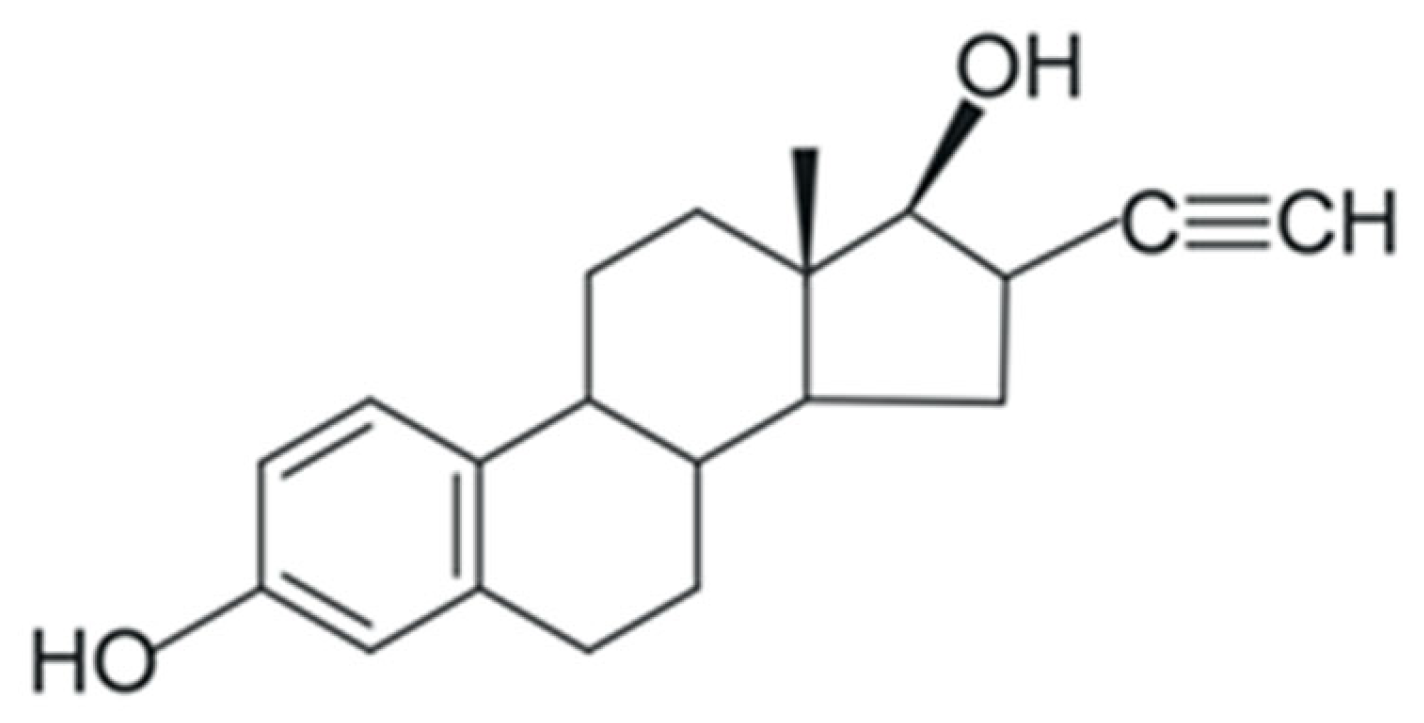
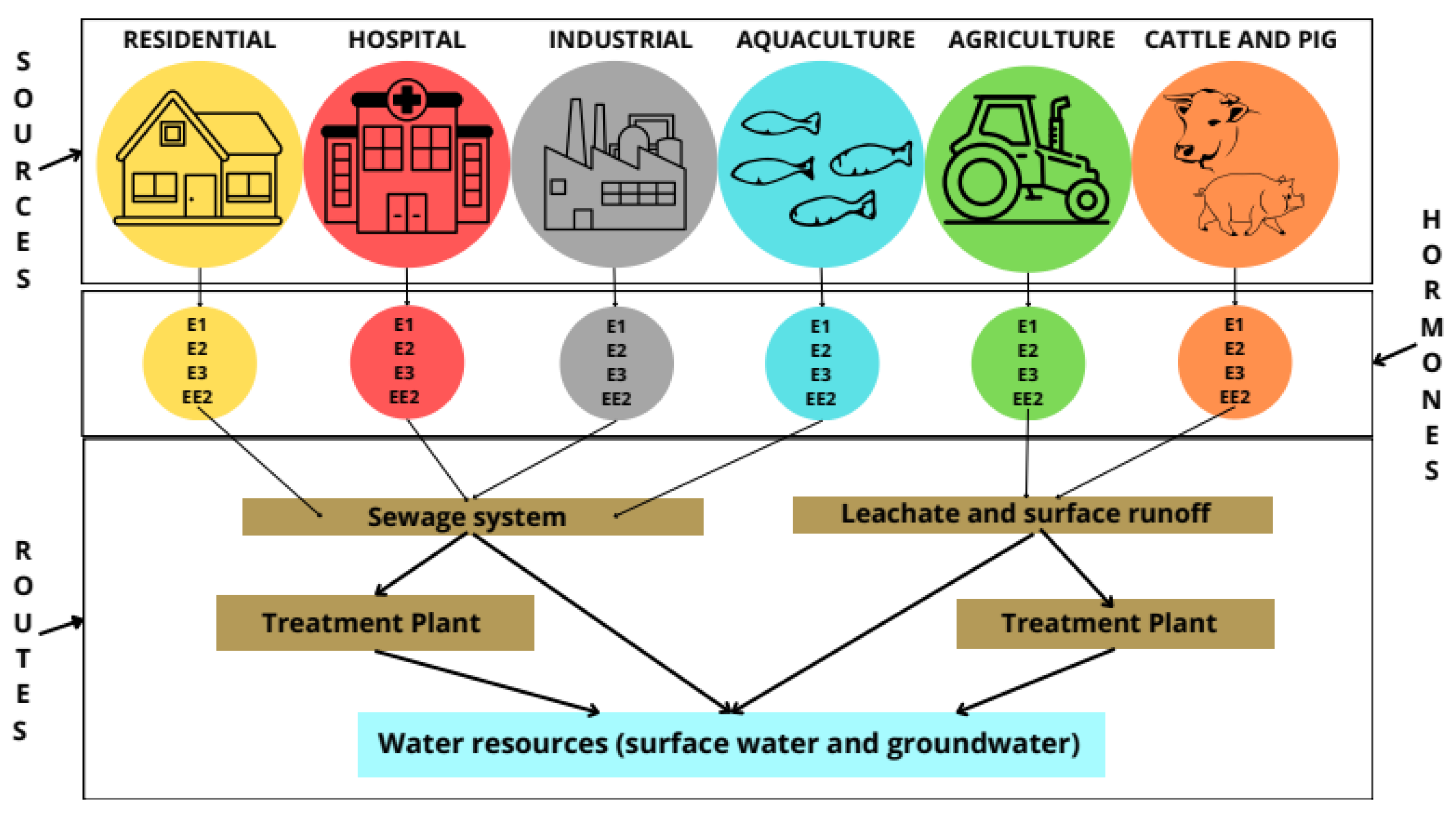
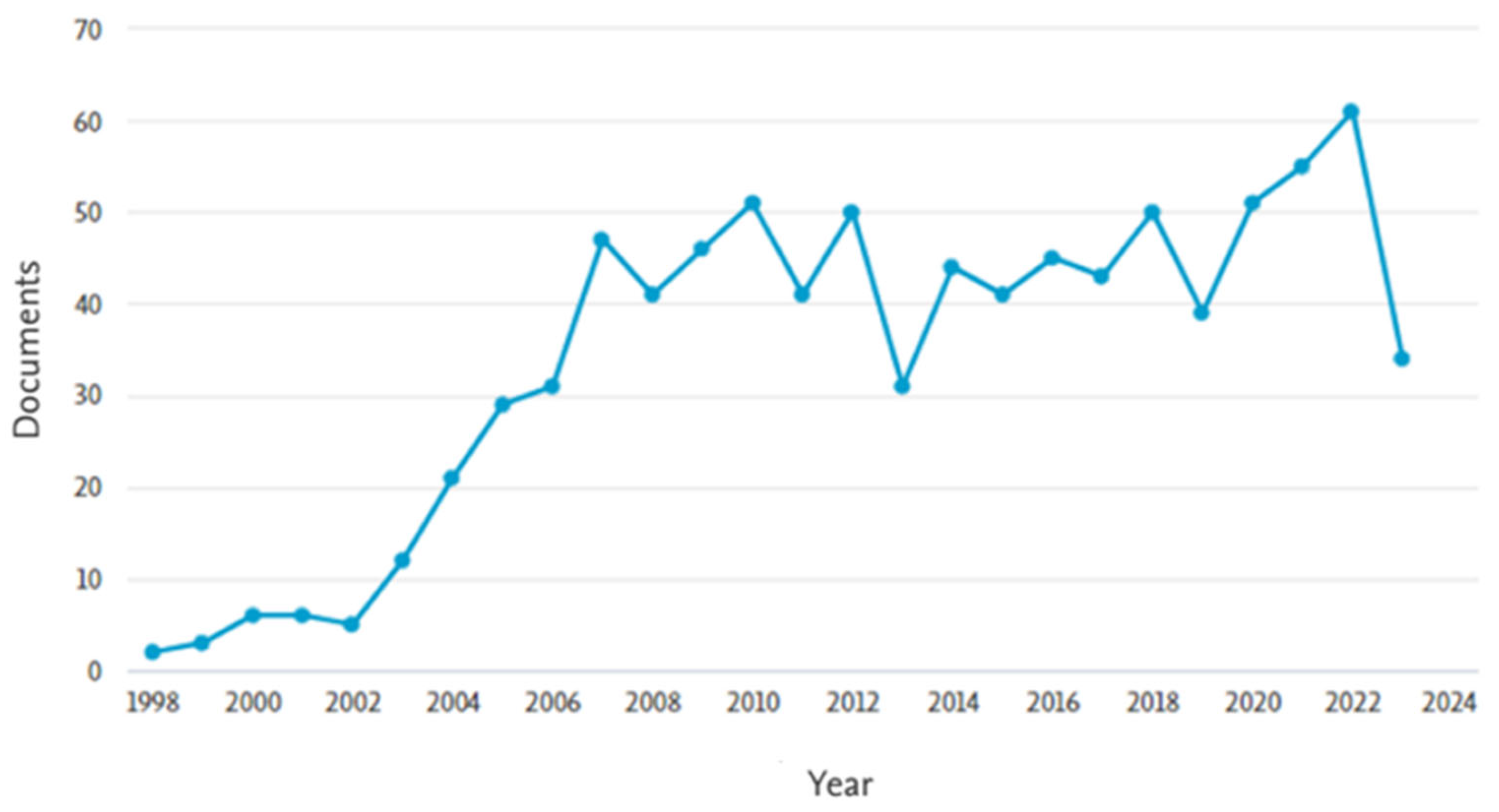
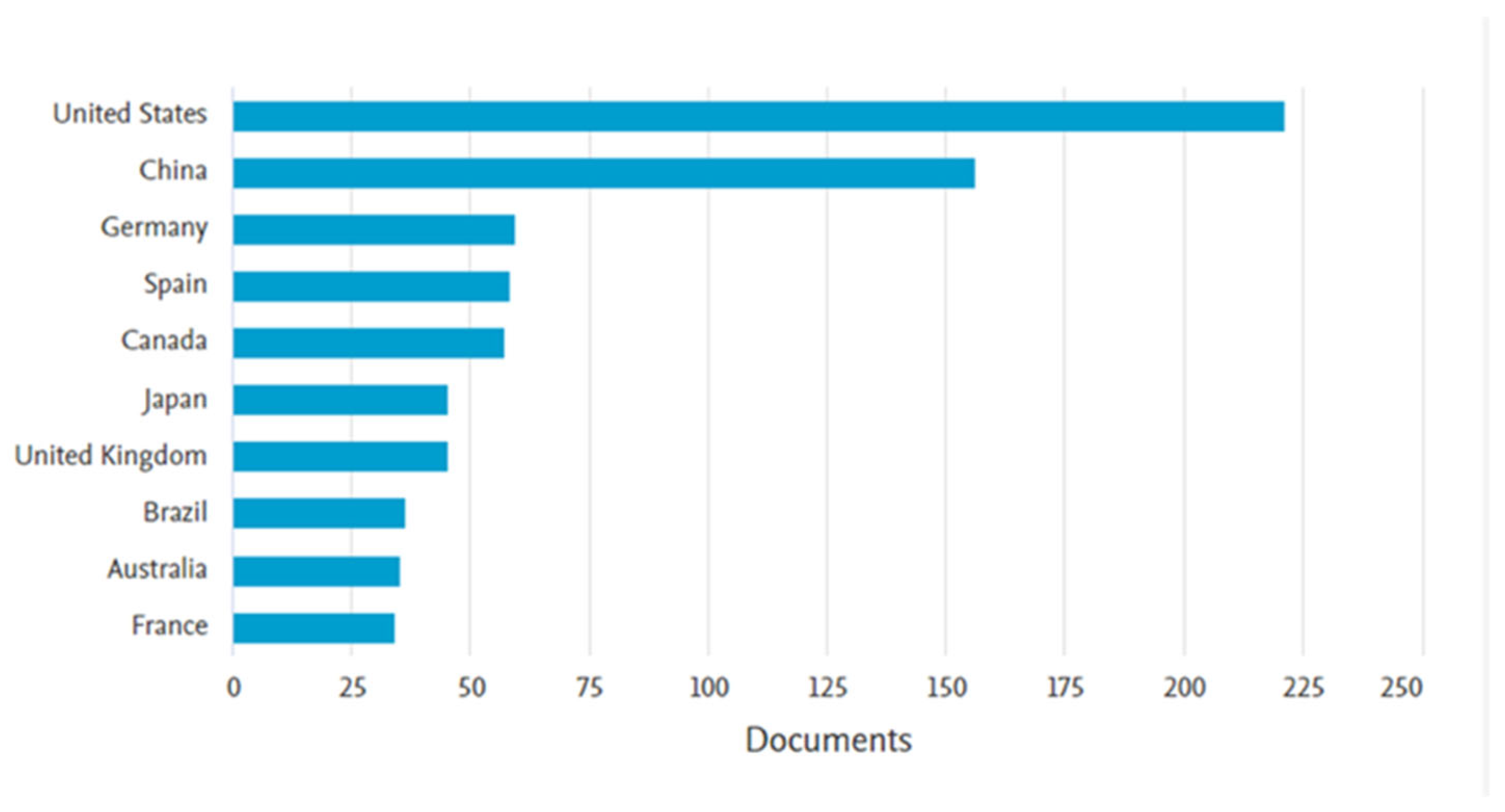
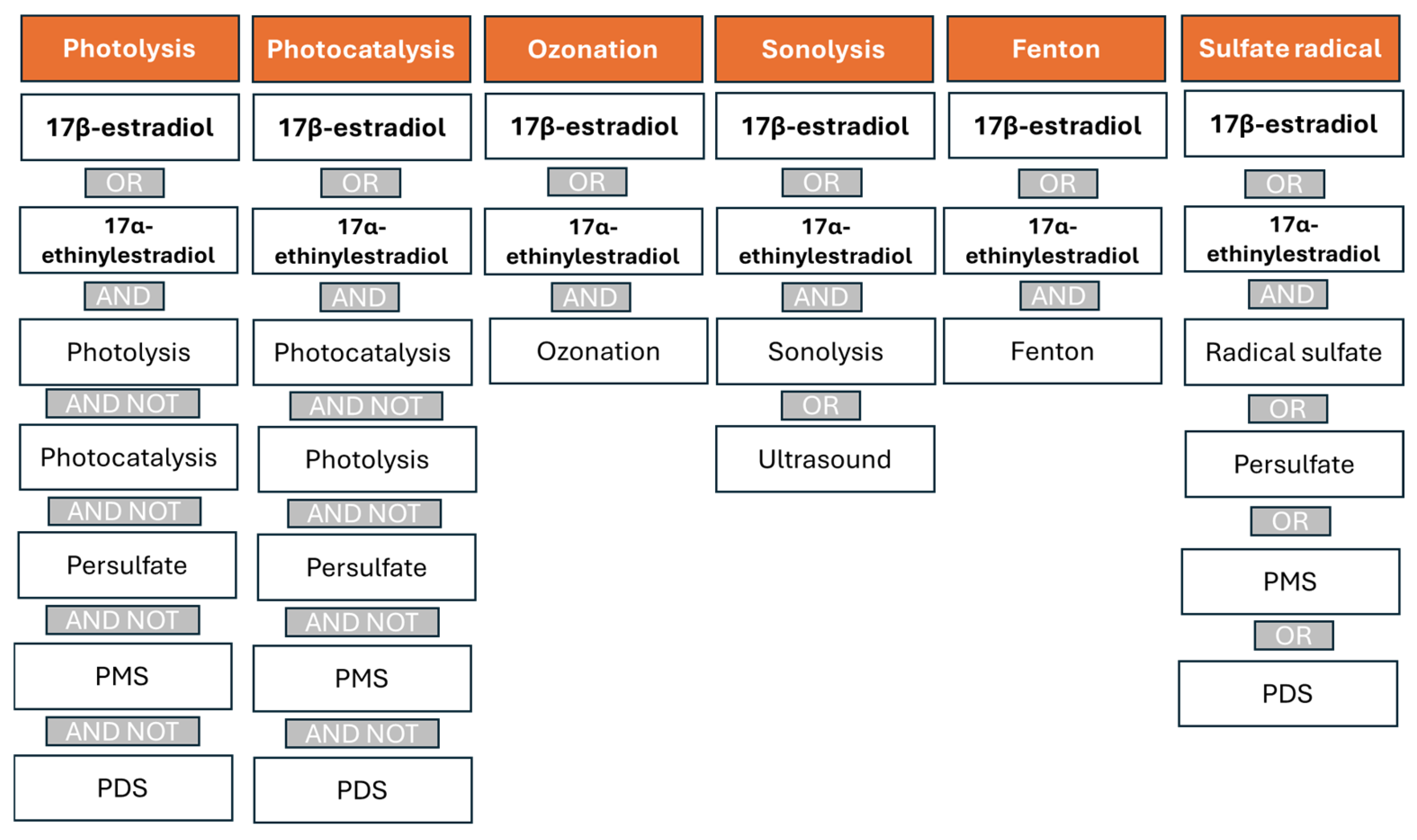
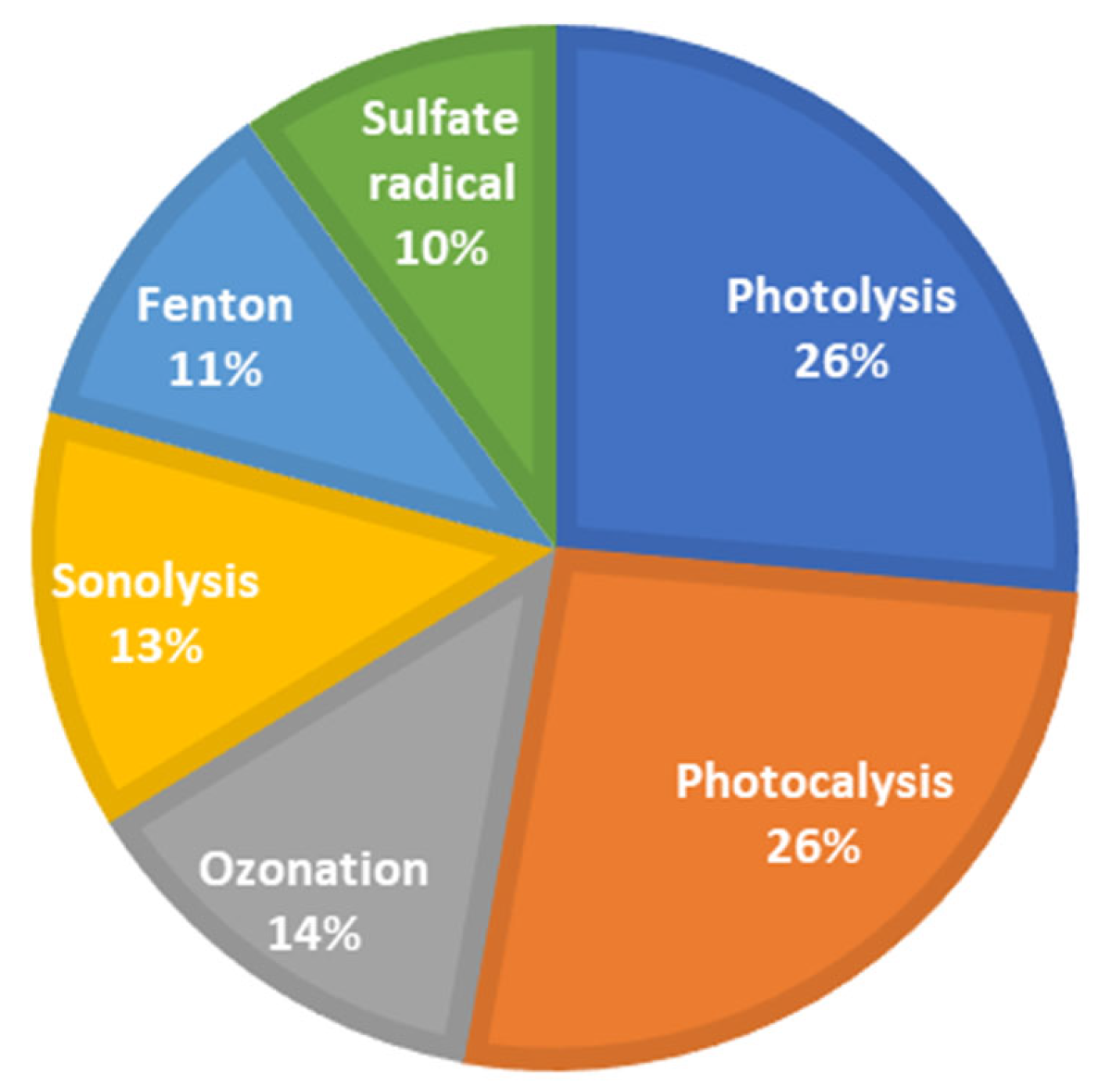
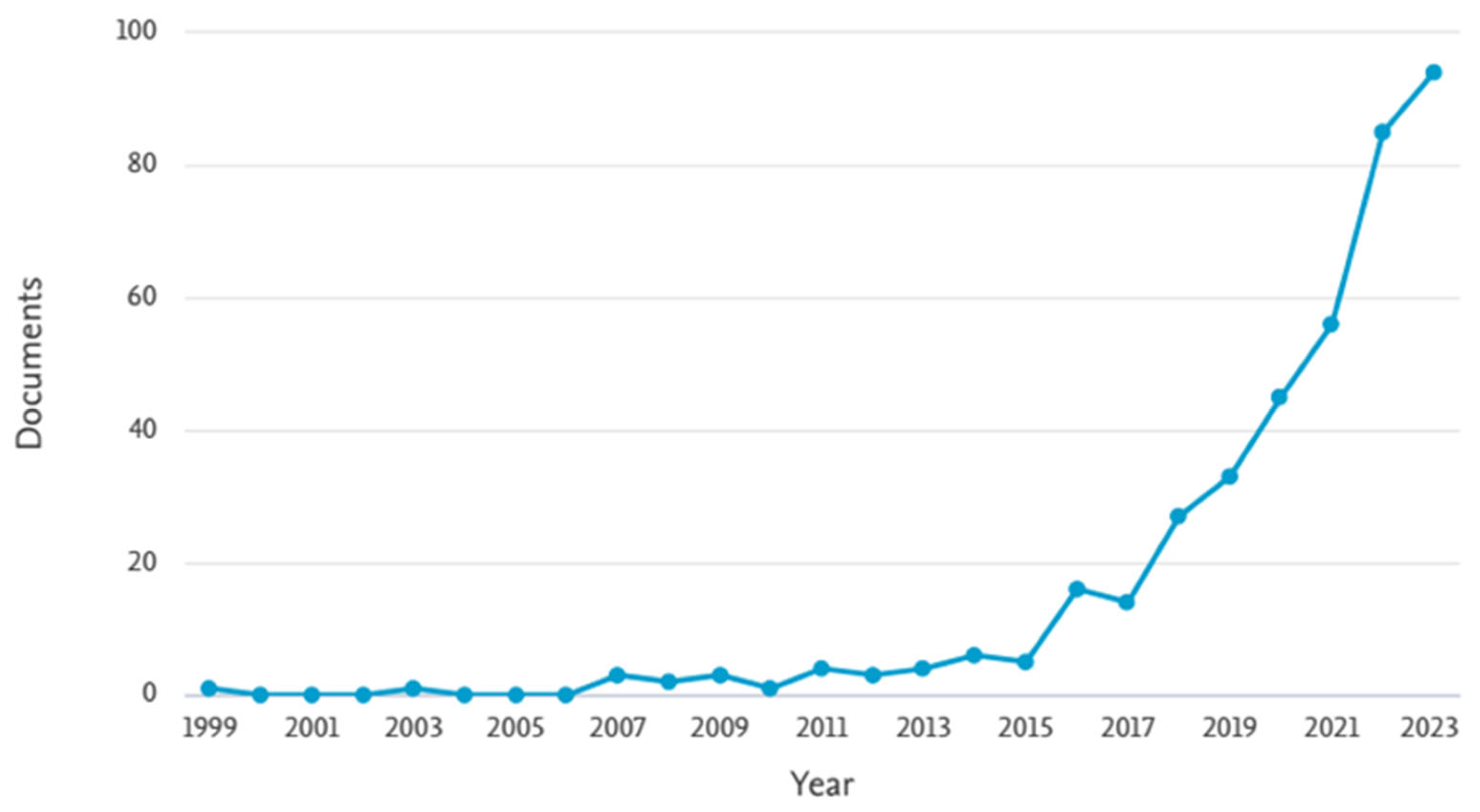
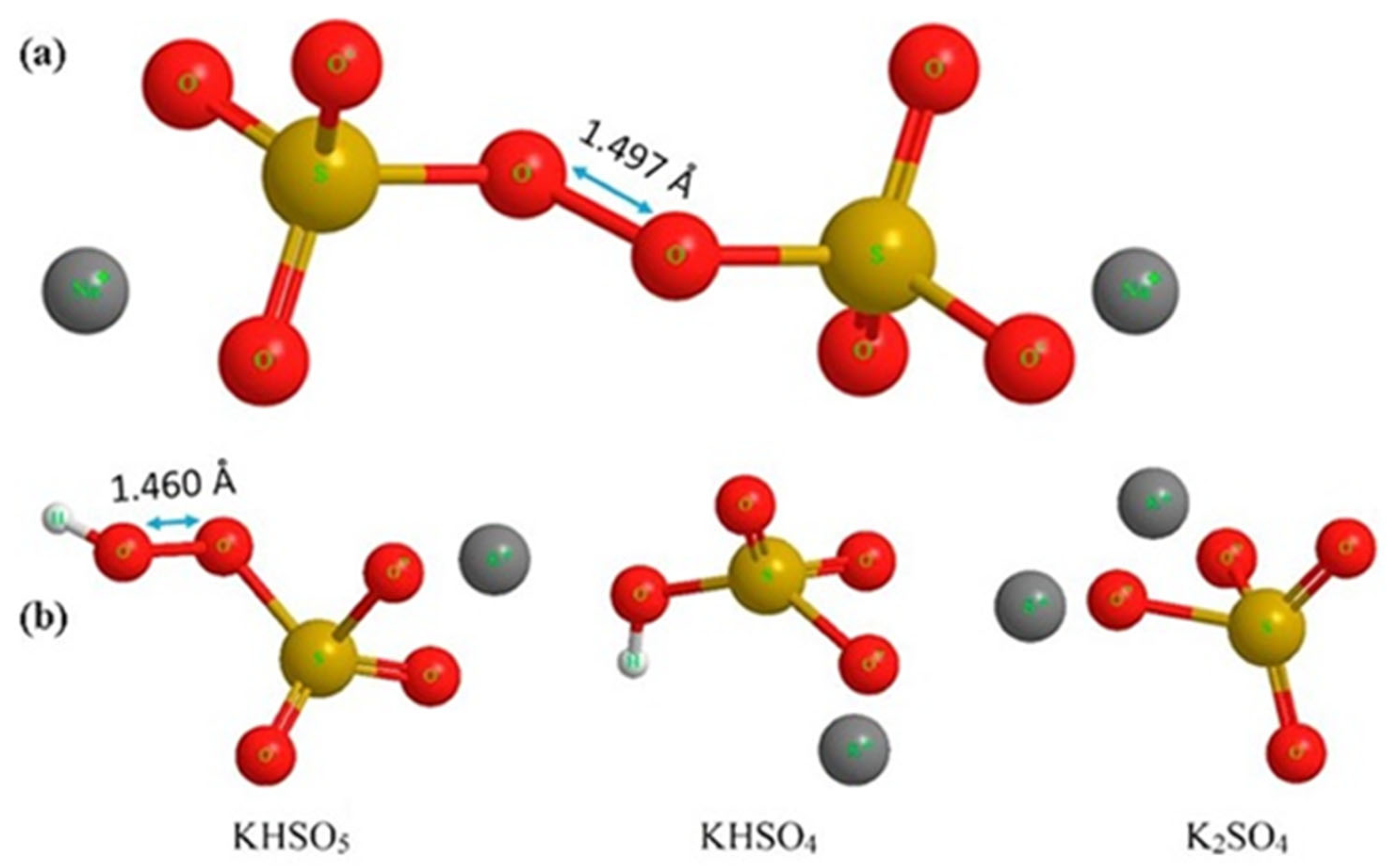
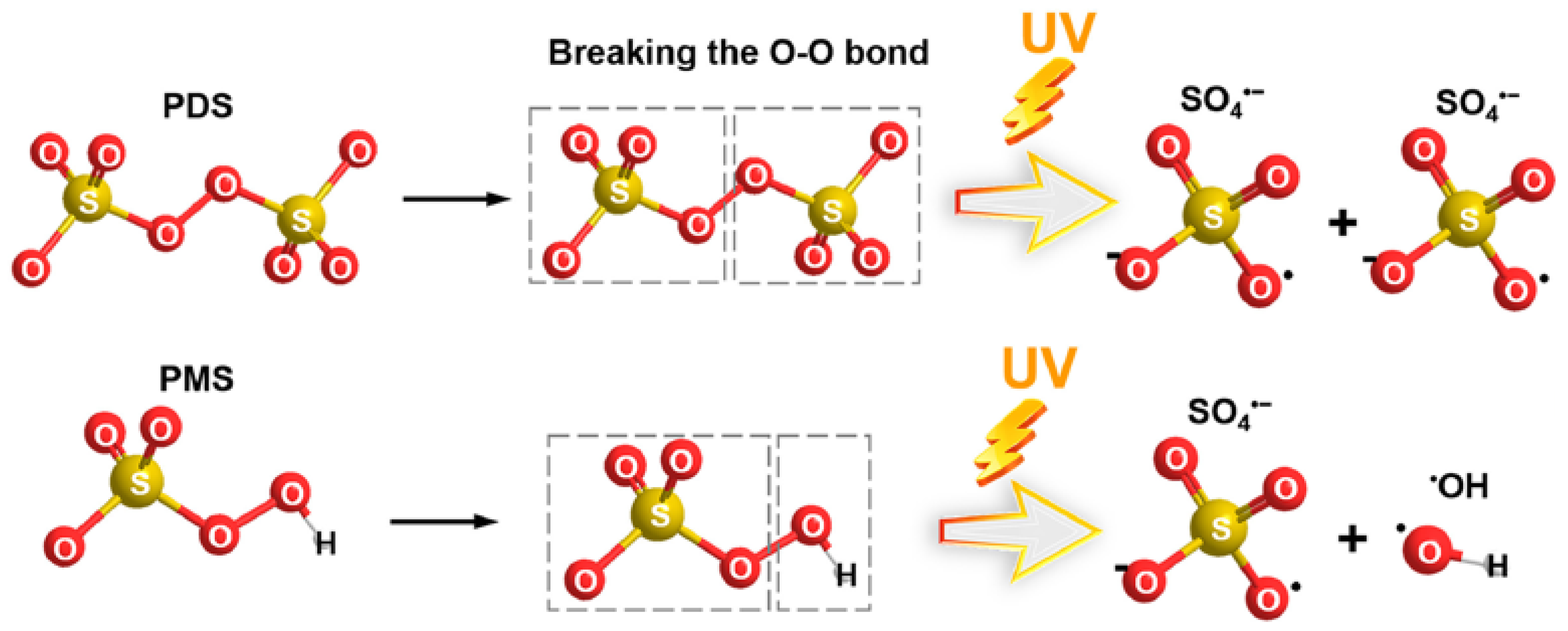
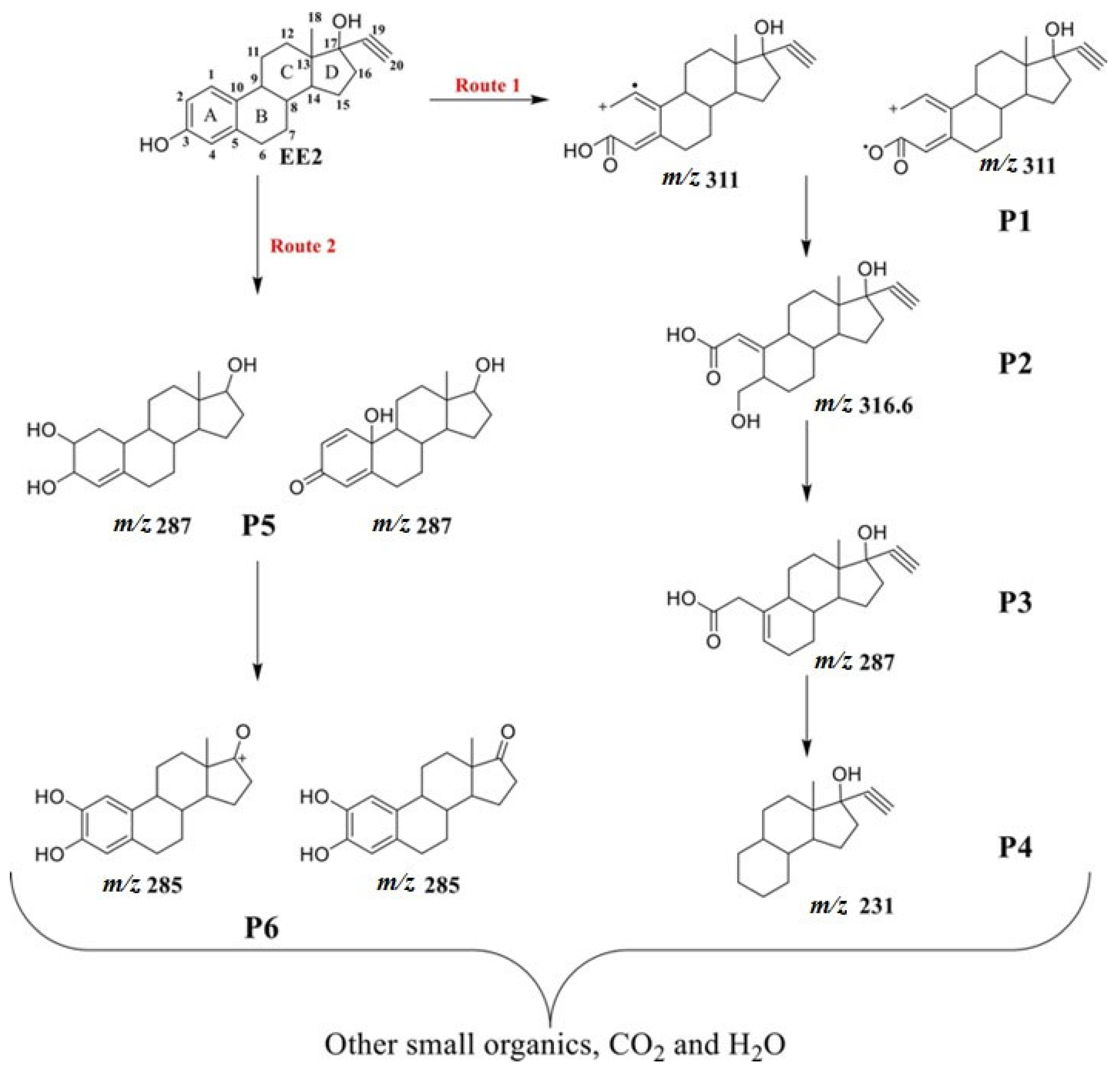
| Property | E2 | EE2 |
|---|---|---|
| CAS | 50-28-2 | 57-63-6 |
| Molar mass (g/mol) | 272.4 g/mol | 296.4 g/mol |
| Molecular formula | C18H24O2 | C20H24O2 |
| Water solubility (mg/L) | 3.90 mg/L (at 27 °C) | 11.3 mg/L (at 27 °C) |
| log Kow | 4.01 | 3.67 |
| pKa | 10.4 | 10.46 |
| Location | EE2 Concentration (ng/L) | Reference |
|---|---|---|
| United States | 3.01–4.67 | [45] |
| Turkey | 11.7–14 | [46] |
| India | 98–350 | [47] |
| Argentina | 5.91–22.37 | [48] |
| Rio de Janeiro (BR) | 248 | [49] |
| São Paulo (BR) | 4390 | [50] |
| Federal District (BR) | 0.07 | [51] |
| Criteria | Sulfate Radical (SO4=) Based Processes | Hydroxyl Radical (HO•) Based Processes |
|---|---|---|
| Technology used | UV–Vis/PMS/Fe(II), UVA/UVB/PS | UV–Vis/H2O2/Fe(II), UV/TiO2, UVA/UVB/H2O2 |
| E2 removal efficiency | >80% in 7 min [105] >99% in 5 min [103] | Slower removal > 99% in 45 min [103] |
| Removal of estrogenic activity | Total | Total |
| Degradation constant (k) | k = 0.305 (UV–Vis/PMS/Fe(II)) [105] | k = 0.079 (UV/TiO2) [105] |
| Time to significant removal | 5 min [103] | Up to 45 min [103] |
| Efficiency under the same oxidant dose (5 mM) | >99% with PS (5 min) [103] | >99% with H2O2 (45 min) [103] |
| Characteristic | PMS (Peroxymonosulfate) | PDS (Peroxydisulfate) |
|---|---|---|
| Formula | 2KHSO5·KHSO4·K2SO4 (commonly as Oxone®) | Na2S2O8 (sodium PDS) |
| Activation type | Heat, UV, metals | Heat, UV, metals |
| pH | There is less need for acidic pH control; effective also in alkaline pH | Better removal at more acidic pH (3 to 5) |
| Radical generated | Significant generation of SO4•− and •OH, with proportions varying by pH | Predominant generation of SO4•−, with minor contribution from •OH |
| Reactivity with hormones | High (often more efficient than PDS) | High, but can be slower. |
| Cost | More expensive | Less expensive |
Disclaimer/Publisher’s Note: The statements, opinions and data contained in all publications are solely those of the individual author(s) and contributor(s) and not of MDPI and/or the editor(s). MDPI and/or the editor(s) disclaim responsibility for any injury to people or property resulting from any ideas, methods, instructions or products referred to in the content. |
© 2025 by the authors. Licensee MDPI, Basel, Switzerland. This article is an open access article distributed under the terms and conditions of the Creative Commons Attribution (CC BY) license (https://creativecommons.org/licenses/by/4.0/).
Share and Cite
Tolêdo, C.S.S.; Bila, D.M.; Campos, J.C. Sulfate Radical-Based Oxidation Processes for Emerging Contaminants: Advances and Perspectives on Degradation of Hormones. Processes 2025, 13, 1949. https://doi.org/10.3390/pr13071949
Tolêdo CSS, Bila DM, Campos JC. Sulfate Radical-Based Oxidation Processes for Emerging Contaminants: Advances and Perspectives on Degradation of Hormones. Processes. 2025; 13(7):1949. https://doi.org/10.3390/pr13071949
Chicago/Turabian StyleTolêdo, Camila S. S., Daniele M. Bila, and Juacyara C. Campos. 2025. "Sulfate Radical-Based Oxidation Processes for Emerging Contaminants: Advances and Perspectives on Degradation of Hormones" Processes 13, no. 7: 1949. https://doi.org/10.3390/pr13071949
APA StyleTolêdo, C. S. S., Bila, D. M., & Campos, J. C. (2025). Sulfate Radical-Based Oxidation Processes for Emerging Contaminants: Advances and Perspectives on Degradation of Hormones. Processes, 13(7), 1949. https://doi.org/10.3390/pr13071949







